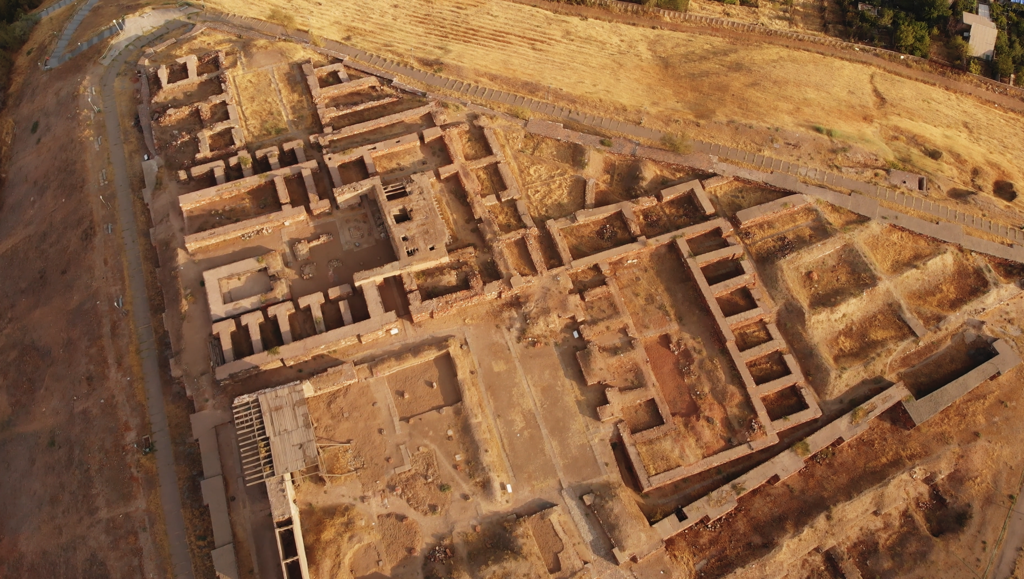Summary
Discovering Erebuni Fortress
Delve into the past at Erebuni Fortress, a historical marvel in Yerevan, Armenia. Founded in 782 BC by King Argishti I of Urartu, this ancient site offers a window into the Iron Age kingdom’s might and sophistication. Visitors can explore the remnants of the once majestic fortress and temple, revealing the Urartian passion for architecture and worship. The fortress, perched atop Arin Berd Hill, provides a panoramic view of the modern city against the backdrop of Mount Ararat, blending the ancient with the present.
Get your dose of History via Email
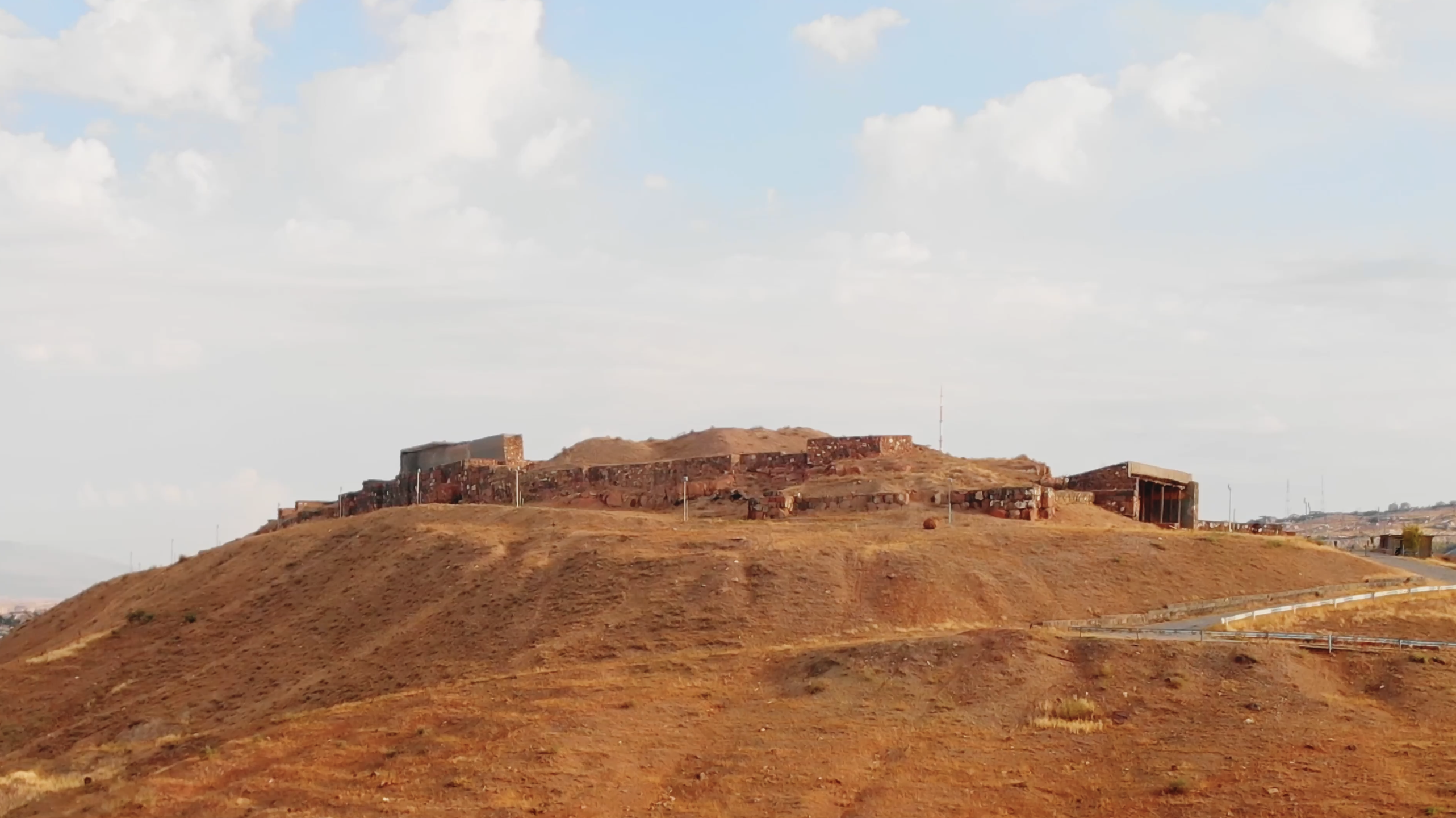
Erebuni’s Cultural Legacy
Erebuni Fortress is not just an archaeological treasure; it is a cultural touchstone for Armenians worldwide. It stands as a symbol of the ancient heritage of the Armenian people. Inside its complex, one can find scriptural evidence on cuneiform inscriptions that speak of the fortress’s grandeur. These inscriptions have contributed significantly to understanding the Urartian language and culture. The on-site museum offers a deeper look with artifacts that have been meticulously preserved, showcasing the artistic and daily life of the Urartians.
The Importance of Preservation
As one of the oldest fortified cities, Erebuni calls for diligent conservation efforts. Active preservation ensures that future generations can share in the experience of this historic landmark. By visiting Erebuni Fortress, individuals participate in the recognition and safeguarding of a site that encapsulates thousands of years of history. This engagement becomes a form of support for ongoing and future archaeological studies that continue to unveil the mysteries buried within its ruins.
Historical Background of Erebuni Fortress
Foundation and Significance
Step into the historical narrative of Erebuni Fortress, a testament to the prowess of the Urartian Kingdom. Established by King Argishti I in 782 BC, this fortress has stood the test of time, offering insights into a civilization long gone. Erebuni was more than a military stronghold; it was a political statement of power and territorial expansion. Standing on the Arin Berd hill, it was once a bustling administrative and religious center, overseeing vast stretches of the Urartian realm.
Archaeological Discoveries
Erebuni Fortress reveals its past through excavations and research. Archaeologists have unearthed remnants that tell a story of urban planning and cultural richness. Structures like the palace complex, temples, and storage rooms provide a glimpse into the Urartian way of life. Remarkably, they have also discovered over 20 cuneiform inscriptions that shed light on Urartu’s history, economy, and society. These finds prove Erebuni’s role as an integral part of Urartian heritage.
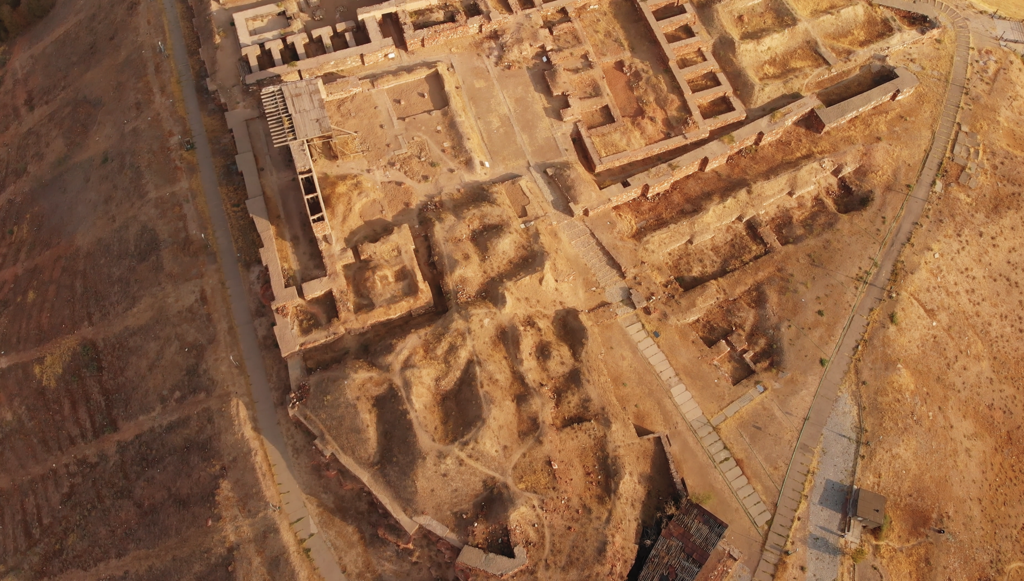
Art and Architecture
Observers marvel at Erebuni’s artistic legacy. Frescoes depicting deities and complex patterns, once adorning the walls, symbolize the Urartians’ artistic flair. The architecture, with massive stone walls and intricate layouts, reflects a blend of utility and beauty. Such features emphasize the fortress’s importance to the Urartian kingdom, serving both as a defense mechanism and a cultural hub.
Erebuni’s strategic relevance was undeniable, sitting at a crossroad of ancient trade routes. It facilitated control over important economic passages, aiding the kingdom’s prosperity. This aspect underscores the interconnectedness of security and trade during ancient times, with Erebuni’s influence echoing far beyond its walls.
Today, the fortress remains a cornerstone of Armenian heritage. It is a beacon for scholars, historians, and visitors seeking to unearth the mysteries of ancient civilizations. Its stories continue to resonate, bridging millennia and linking the modern world to its ancient origins. Erebuni’s past enriches our understanding of early societies and their lasting legacy.
The Discovery of Erebuni Fortress
Uncovering the Past
The unveiling of Erebuni Fortress marked a momentous event in Armenian archaeology. It was rediscovered by accident in the 19th century, during railway construction near Yerevan. The site captured the imagination of locals and historians alike, leading to the first archaeological excavations in the early 20th century. These initial digs revealed structures that hinted at a grand past, hidden beneath layers of time.
The Archaeological Breakthrough
However, the real breakthrough came in 1950 when a team of Armenian archaeologists, under the leadership of Konstantin Hovhannisyan, began systematic excavations. They unearthed the palace, temples, and fortifications. These findings confirmed the site as the historical Erebuni Fortress. They also found numerous inscriptions, pottery, and artefacts that provided a direct link to the kingdom of Urartu.
Insight into Urartian Civilization
The findings from Erebuni gave scholars unparalleled insight into Urartian civilization. The inscriptions, many in cuneiform script, detailed religious practices, social hierarchy, and military conquests. These texts were pivotal in understanding the governmental and cultural systems of Urartu. In addition, the artefacts and architecture offer a detailed look at the artistic and daily life of its people.
The excavations also helped historians place Erebuni Fortress in the broader context of regional history. The strategic location of Erebuni helped experts understand its role in trade and military campaigns. This focus shed light on the interconnected relationships between the ancient civilizations of the Near East.
Today, Erebuni Fortress is renowned not only for its historical import but as a symbol of discovery and exploration into the ancient world. The site continues to yield secrets, as ongoing archaeological work delves deeper into its earth. Each layer uncovered brings new stories to the surface, enriching the tapestry of humanity’s shared history.
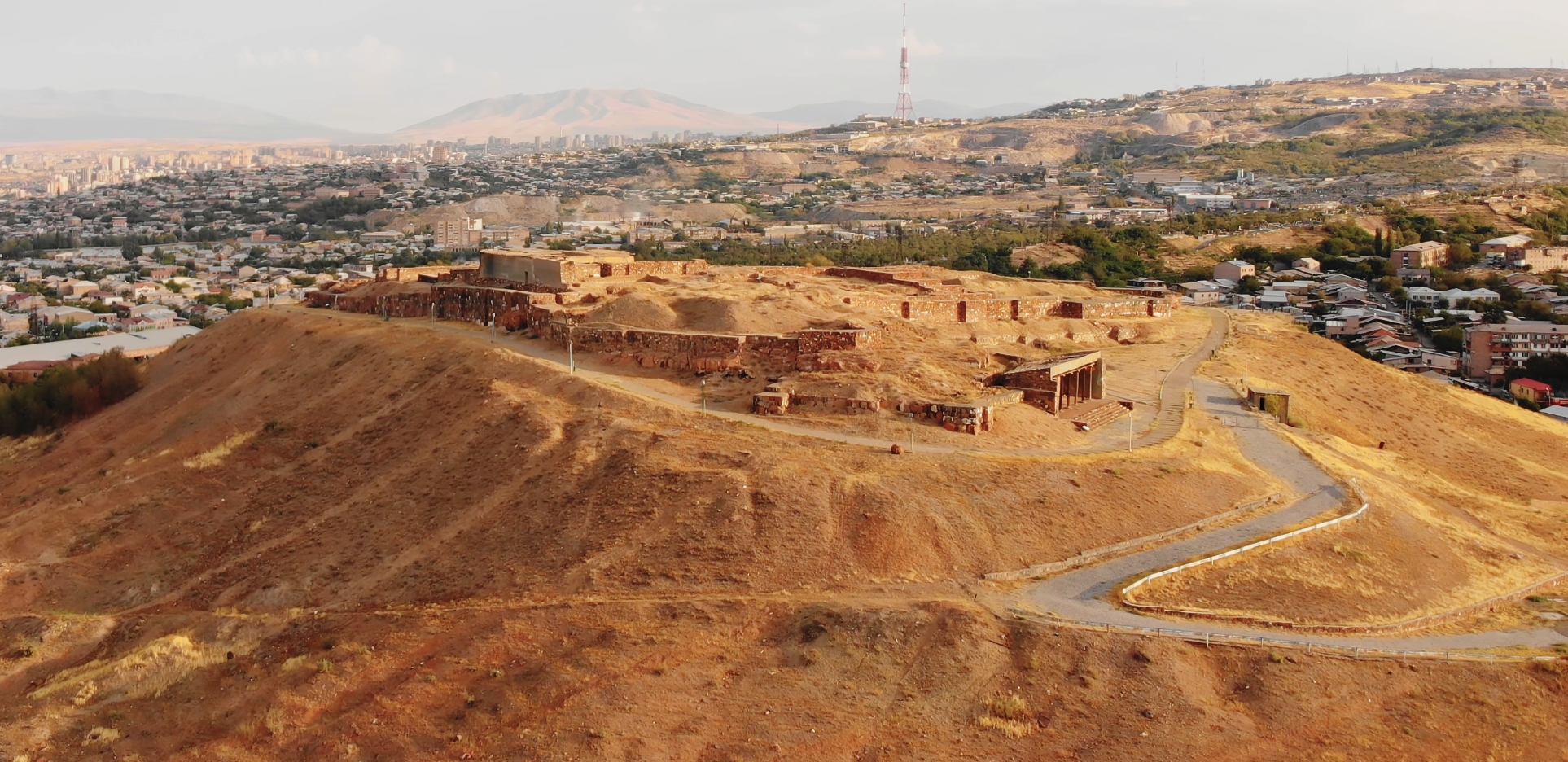
Cultural Significance, Dating methods, Theories and Interpretations
The Heart of Urartian Culture
Erebuni Fortress is more than an ancient structure; it is the embodiment of Urartian culture and identity. As one of the oldest centers of civilization in Armenia, it served as a crucial political and religious hub. Celebrations and rituals within its walls echo through history. The fortress is a testament to the artistry and beliefs of the time, influencing Armenian culture to this day.
Chronology Unveiled: Dating Erebuni
Scientists have used numerous dating methods to unravel Erebuni’s past. These include radiocarbon dating and dendrochronology which analyze organic remains and tree rings, respectively. These techniques have combined to confirm Erebuni’s foundation around the 8th century BC. They pinpoint the era when King Argishti I declared its establishment, providing a tangible timeline to its grandeur.
Theories about Erebuni’s Purpose
While much about Erebuni is accepted as fact, some historians propose theories regarding its functions. Beyond defense, some suggest Erebuni may have been a significant trade center or a royal retreat. These ideas stem from its strategic placement and lavish architecture, implying multifaceted roles within the Urartian kingdom.
Interpreting Erebuni’s Relics
Every artefact unearthed at Erebuni sparks a debate concerning its use and significance. From religious totes to everyday utensils, these items are carefully studied for clues about the Urartians’ lives. Scholars analyze patterns and symbols on these relics to infer spiritual and social practices amongst the ancients.
Defining Erebuni’s Lasting Impact
The relevance of Erebuni Fortress extends beyond its ruins. It encapsulates the spirit of an era long past yet deeply etched into today’s Armenian culture. This site has shaped the national identity and continues to inspire awe and intrigue as researchers uncover new information, ensuring Erebuni’s tale endures through the ages.
Conclusion and Sources
The exploration and revelations regarding Erebuni Fortress provide not just a glimpse into the Urartian Empire, but they also offer invaluable insights into ancient civilizations and their complexities. From its strategic importance to its cultural richness, Erebuni continues to captivate historians and tourists alike. The fortress stands as an enduring piece of Armenian heritage and narrates a story that is integral to the country’s identity. As research progresses, Erebuni Fortress promises to yield even more knowledge, keeping the legacy of this ancient marvel alive.
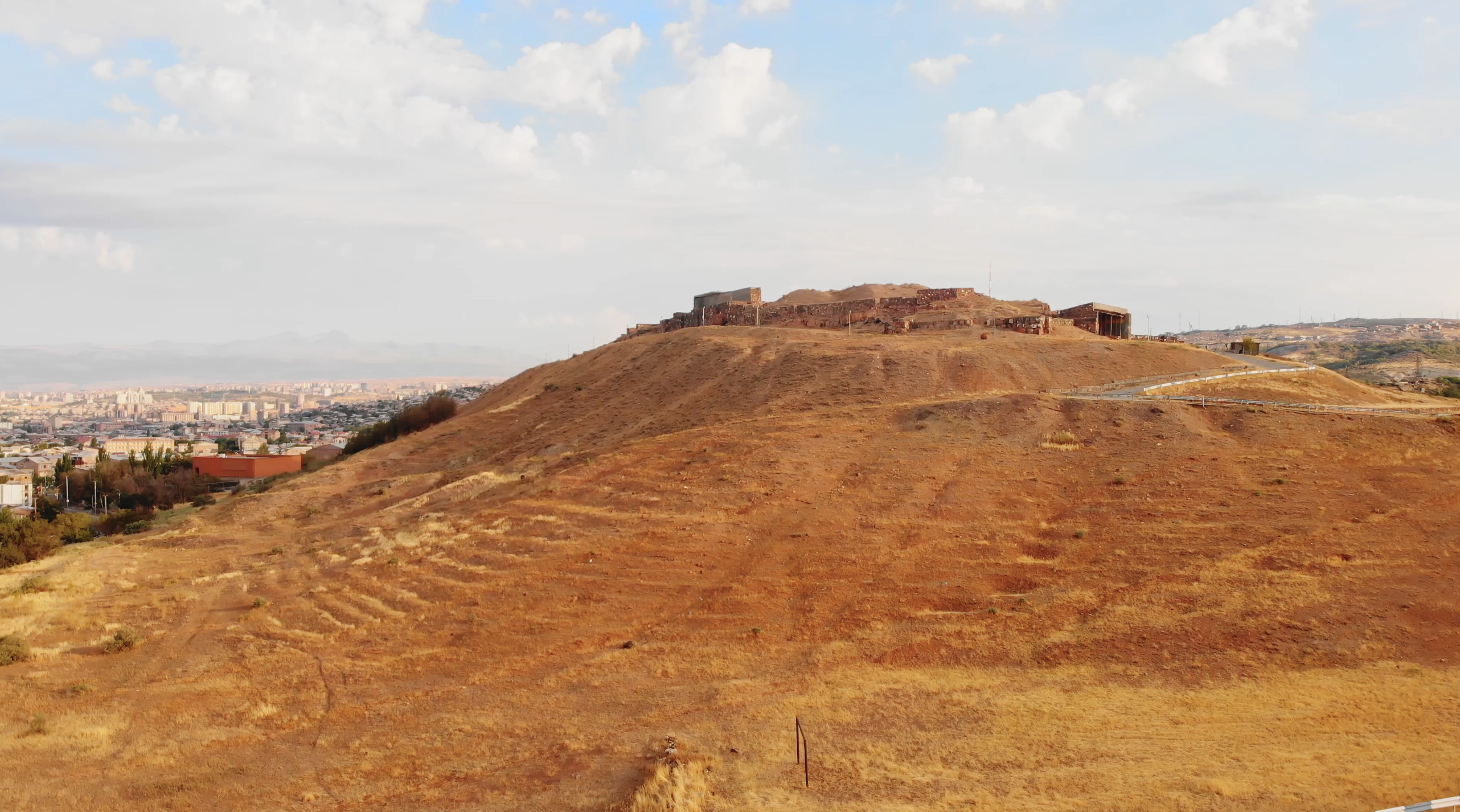
For further reading and to validate the information presented in this article, the following sources are recommended:
Or you can check any of these reputable archaeological and historical texts:
Burney, C. (2004). Historical Dictionary of the Hittites. Scarecrow Press.
Chahin, M. (2001). The Kingdom of Armenia: A History. Routledge.
Piotrovsky, B. B. (1969). The Ancient Civilization of Urartu. Cowles Book Co.
Zimansky, P. E. (1985). Ecology and Empire: The Structure of the Urartian State. Studies in Ancient Oriental Civilization, no. 41. Oriental Institute of the University of Chicago.

